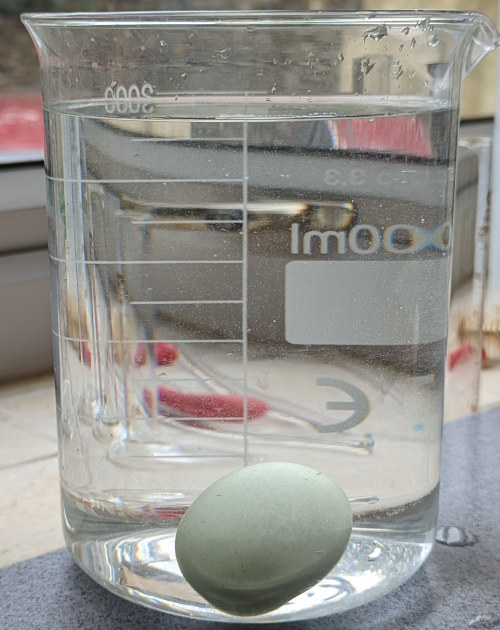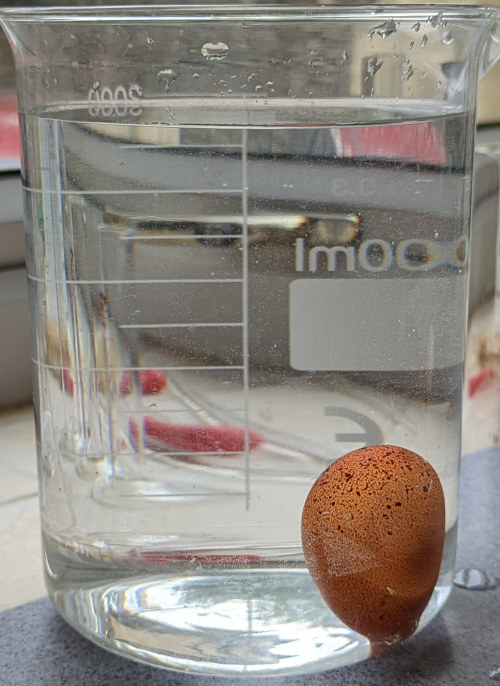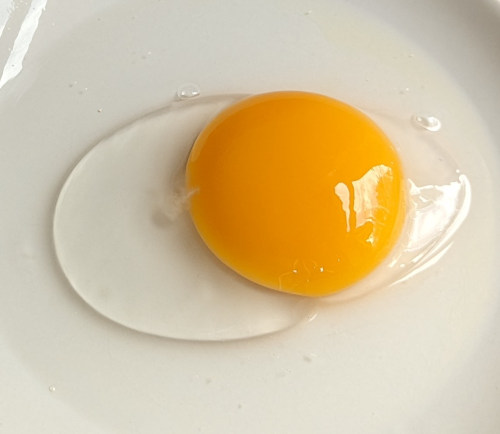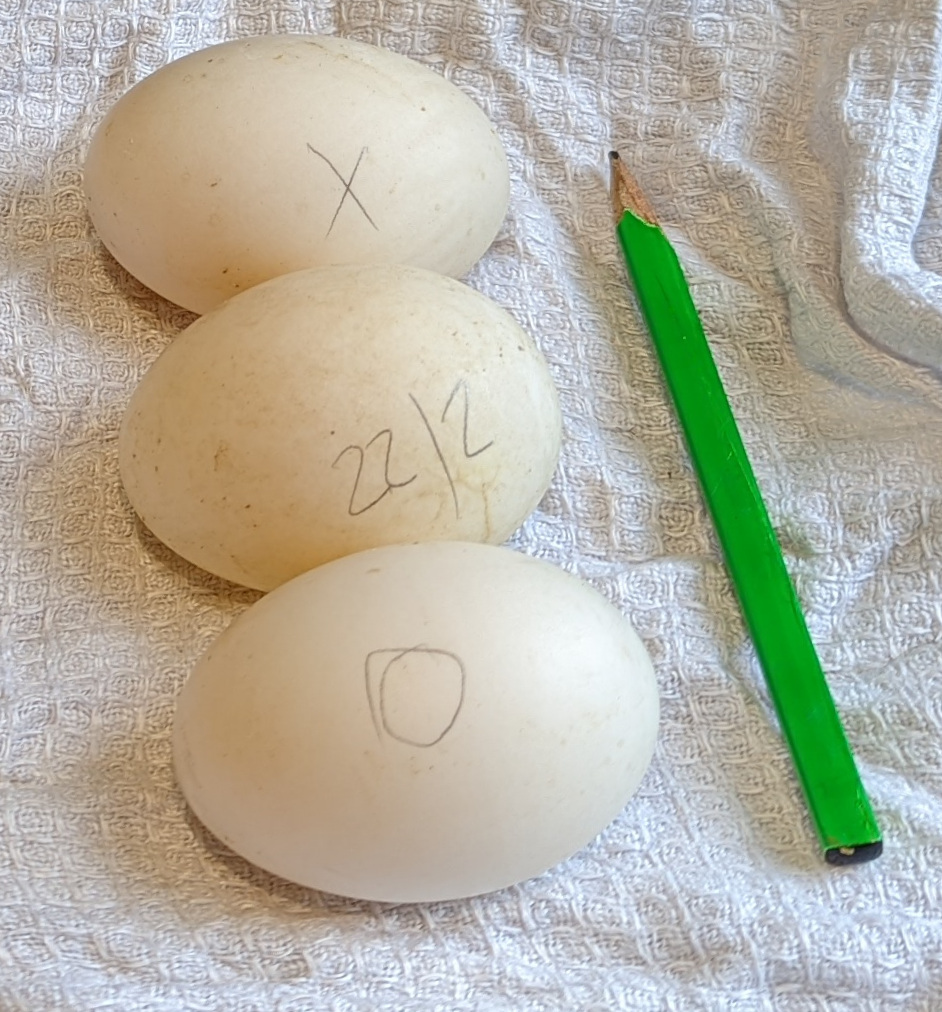How to test eggs for freshness. 4 methods with the results.

Testing an egg for freshness is not the same as assessing it's quality. The quality of the egg may affect the freshness and how long the eggs stays fresh but they are not the same thing.
Egg freshness testing. How and why it works.
There are 4 ways to test eggs for freshness:
- Floating the egg in water,
- Crack it open and examine the insides,
- The gentle shake test,
- Write "laid on" or "use by" dates on the eggs.
The egg float test is a very accurate way of testing how fresh an egg is. As well as using it to test chickens eggs for freshness, the egg float test works on all types of egg from a quail to ostrich.
The egg float test works because the density of egg is slightly higher than that of water so a fresh egg sinks. As the egg gets older, water evaporates enlarging the air space in the round end of the shell making the egg float.
You simply add the eggs you want to test to a bowl of water.
Eggs kept in the fridge will stay fresher for longer.
Below: The egg float test in action with 4 eggs of varying freshness.
Video transcript: Here is the egg float freshness test in action. The first egg is the freshest and sinks quickly to lie flat on the bottom. This Welsummer egg is the next freshest one and is probably a week to ten days old. It sinks more slowly and the round end floats upwards. This one is probably about three weeks old and you can see how it rises slowly back up to the surface. Then this egg is 30 to 40 days old and you see it bobs around like a cork.
The egg float test is simple to do, works and is surprisingly accurate.
Interpreting the results of the egg float freshness test:
Below: The freshest eggs lie flat at the bottom of the bowl. These eggs are between 0 and 10 days old. The eggs are good to eat.

Below: These are the next freshest eggs and the sit on the bottom of the bowl but with their round ends pointing upwards. These eggs are between 10 and 20 days old. These eggs are fine to eat.

Below: Eggs between 20 and 30 days old begin to float up off the bottom and may settle on the surface on anywhere in the water column. These eggs can be safely eaten in cooked thoroughly.

Below: eggs older than 30 days begin to float on the surface of the water like corks. Eggs that do this should be discarded as they may make you ill.

These second way to determine the freshness of an egg is to crack it open and take a look at the insides.
Crack the egg onto a flat plate and take a look.
A fresh egg will have a round yolk and clearly defined white and you will be able to see the chalazae clearly. These are the spring like structures that hold the yolk in place.
Below: This eggs is fresh. The yolk is nice and round and there is plenty of solid egg white.

Below: This egg is not fresh, the yolk is a funny shape and the white is completely flat and runny.

The third way to test the freshness of an egg is the gentle shake test. Hold the egg carefully in your hand and give it a little shake. If you can hear the contents sloshing around the egg is older and has failed the test.
Below: The shake test in action.
The fourth and last way of keeping track of the freshness of eggs is to write laid on dates on the eggs. Marking eggs properly is important as most people do not have good or long memories.
Below: Use a pencil and write the day and month on the shell.

Does the freshness test work for eggs from all poultry breeds?
The egg freshness testing works for all breeds of poultry and you can use the egg float test to assess the freshness of any egg you buy as well.
Things to know about freshness testing and eggs:
- There are 4 basic tests to determine the freshness of eggs.
- These tests can give you an idea of how fresh eggs are.
- The test work for all breeds of poultry.
- Freshness testing will not tell you if the egg is infected with a pathogen.
- Freshness testing is quick and cheap.
